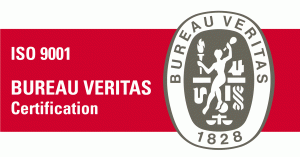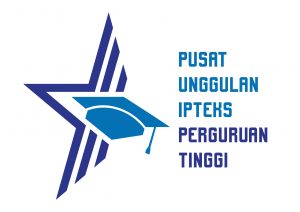Purwiyatno Hariyadi
Introduction
Many governments of the world have realised the importance of food security. However, conditions of food insecurity, as reflected by the high number of malnourished individuals in the world, are still alarming. One of the reasons for this alarming situation is over emphasis on production (availability) as compared to access and consumption aspects of food security.
Many governments’ policies on food production are usually focussed only on one or two main food commodities – such as rice, in the case of Asia (Sidik 2004). Take Indonesia as an illustration – a rice-based food policy has resulted in many non-ideal conditions for food security in Indonesia, such as:
(i) consumption per capita of rice is 130-139 kg, and consequently
(ii) rice is the dominant feature of consumers’ nutrient intake, i.e. rice contributes as much as 53 % of the total calorie needs and about 47 % of the protein needs, thus the Indonesian food system has a high dependency on rice;
(iii) rice as not only a trade commodity but also a political one;
(iv) trade of rice has become a very sensitive issue, even though in terms of proportion, rice imports are relatively low.
The worst effect of the rice-based policy for Indonesia is that it has caused a reduced development of local food resources, less research investment into non-rice-based foods, and in turn makes dependency of rice even higher. Moreover, with the development of modern food retailing establishments, several local and traditional foods have disappeared from the market and menus of the people.
To equate food security with one or two food items is strategically wrong. This condition has been due to less awareness and understanding of food security among the policy makers in national development. Food security is a strategic component for a nation’s competitiveness. Furthermore, food security can be viewed as a prerequisite for national security. Hence, the paper will focus more on discussing the strategic meaning of food security in moving toward food independence.
Concept of Food Security
In accordance with FAO, food security exists when all people, at all times, have physical and economic access to sufficient, safe and nutritious food to meet their dietary needs and food preferences for an active and healthy life (Smulders 2007). In general, there are four main aspects of food security: (i) food availability, (ii) stability of supplies, (iii) access to supplies, and (iv) food utilisation (Table 1), which eventually leads to the criteria of healthy and active individuals. Consequently, no country is said to have a perfect food security status if there are still individuals unable to meet their needs to stay healthy and actively participate in various economic activities. In other words, the level of food security (or insecurity) of a country is actually manifested by the nutrition status of the people.
Table 1. Food Security Aspects and Their Indicators
| Aspects of food security | Input indicators | Output indicators |
| 1. Food availability |
|
|
| 2. Reliability of supply |
|
|
| 3. Accessibility |
|
Active and healthy life of individual |
| 4. Consumption sufficiency |
|
This concept can be applied to measure a government’s performance in assuring the peoples’ access to food. Moreover, this concept not only shows the level of a government’s commitment in fulfilling the right to food but also in improving national competitiveness (Figure 1). Furthermore, increasing economic growth and national competitiveness will result in a demand for a higher standard of food security of a nation. Policy makers should be aware of this important framework in order to design priorities of development programs.
Figure 1. Improvement of food security and national competitiveness
Food Security and National Security
It has to be realised that the concept and definition of food security discussed above is not always positively correlated with national security. Hypothetically, despite its ability in ensuring availability of and access to high quality, safe and nutritious foods for its people, a country can potentially experience “(food) insecurity” especially with regards to its dependency on imports. This may happen (i) to a country with insufficient natural resources to meet their own dietary needs, or (ii) to a country with sufficient natural resources but which has not optimally explored nor developed these resources to ensure food security.
Hence, strategies in fulfilling aspects of food security and their correlation with national security (and national competitiveness) are mainly influenced by the commitment of the government. Consequently, there is a need for more fundamental understanding of national food security and its correlation to its social, cultural and political systems and its national economy, as suggested by FIVIMS (Figure 2).
Figure 2. Conceptual causality for food security (FIVIMS 2002)
Since food security of a country is highly influenced by its social structures, culture, politics and economy (Figure 2), then it is a must for a country to develop its own system, that suits the conditions of the available resources, in terms of its environment (including natural, social and cultural environment), technology (including daily habits and other practices) and human resources. In short, the system, the social structure, culture, politics and economy need to be developed and established based on specific local resources (Hariyadi et al. 2006). National food systems developed using local resources will have strong backward-linkages with local farming systems, improve food diversification, and have less dependency on only one (or two) food commodities – such as rice for Indonesia. Concerted national efforts in improving food security based on food diversification utilising local resources will contribute towards food independence (Figure 3), and is a prerequisite of national security.
Figure 3. Improvement of food independence towards national security
Local-Based Food Diversification
Taking into consideration its characteristics and potentials, countries such as Indonesia have a big opportunity in realising its food security by improving food diversification. The government (especially the local government) has to re-evaluate whether rice is the only staple food appropriate to the needs of its region. Government needs to seriously look into its local potential related to staple foods that suit their natural and cultural environment. The concept of food diversification requires that each region needs to create regional food security that conforms to its regional potential.
The Gorontalo Province of Indonesia, for example, is famous for its maize. However, the people of Gorontalo still have rice as their staple food. The Province of Papua has a tradition of using sago as a staple food, but they currently are still dependant on rice. It is clear then that there is a need for a fundamental reorientation in regional food development. Consequently, several additional indicators are needed to assess food independency (Table 2).
Table 2. Indicators of food independency
| Independent food security | Indicator |
|---|---|
| Food security indicators |
|
| Indicators of food diversification |
|
Role of Food Technology
Food diversification programs are essential to reduce the high dependency on rice and to boost the development of local food resources (Hariyadi 2003). Food technology, in particular, has to play an important role in developing food diversification based on local resources, especially at the industrial level. Several critical issues of food diversification need to be addressed, including:
(i) efforts in exploration and using the potential of the best local material,
(ii) improvement and application of cultivation technology, processing and packaging, and
(iii) application of the food industrialisation concept.
Industrialisation of local-based foods should be conducted by creating added value in such a way that the local food product has a better value than or at least the same as that of rice-based food products (and wheat) which are currently dominating traditional Indonesian menus. Creating added value is a challenge for the food technologist. Research to explore the unique characteristics and functionalities of local foods, to identify and map local preferences and consumers habits, for example, should be conducted intensively.
References
FIVIMS (2002) Food Insecurity and Vulnerability Information and Mapping Systems. Available at: http://www.fivims.net
Hariyadi, P (2003) Industrialization of food diversification – toward indigenous resource-based food security (in Bahasa Indonesia). In Hariyadi, P, Krisnamurti, B and Winarno, FG (eds) Food Diversification – Regional Government and Private Initiative [Penganekaragaman Pangan: Prakarsa Swasta dan Pemerintah Daerah]. Jakarta: Food Diversification Forum.
Hariyadi, P, Martianto, D, Arifin, B, Wijaya, B and Winarno, FG (2006) Reconstruction of social institutions for prevention and handling of food insecurity and malnutrition (In Bahasa Indonesia).Proceedings Lokakarya Nasional II Penganekaragaman Pangan). Forum Kerja Penganekaragaman Pangan dan PT. Jakarta: ISM Bogasari Flour Mills.
Sidik, M (2004) Rice policies in view of trade liberation. Rome, Italy: FAO Rice Conference, Rome, Italy, 12-13 February 2004.
Smulders, M (2007) Presentation at Joint FAO and APERI Workshop on Food Security and FIVIMS, Tehran, 23-25 October 2007.
Dr. Purwiyatno Hariyadi is Director of the Southeast Asian Food and Agricultural Science and Technology (SEAFAST) Center, LPPM, Bogor Agricultural University (IPB), Bogor, West Java, Indonesia, a Lecturer at the Department of Food Science and Technology, Faculty of Agricultural Engineering and Technology, IPB, and President of the Indonesian Association of Food Technologists (PATPI); E-mail: hariyadi@seafast.org



